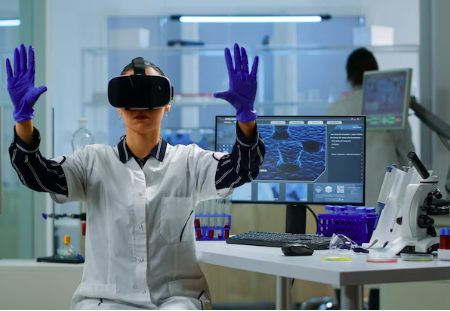Medical education demands extensive study, deep understanding, and consistent practice. For students pursuing medicine, having access to reliable, well-structured resources can make a significant difference in grasping complex subjects and preparing for exams. Fortunately, many top institutions and platforms offer high-quality study materials at no cost. Here are some of the best places to find free study resources specifically for medical students:
- Osmosis (YouTube Channel) – Offers animated videos that simplify medical concepts such as physiology, pathology, and pharmacology. While the full platform is subscription-based, their YouTube channel features hundreds of free videos, many of which include clinical vignettes, mnemonics, and concept maps.
- AMBOSS Free Library – AMBOSS occasionally offers limited-time access to its full medical library, but even without a subscription, students can access select articles and summaries on core topics. It includes integrated pop-up explanations and interactive diagrams that are especially useful for USMLE and shelf exam prep.
- Khan Academy Medicine – A trusted and foundational resource covering topics like cardiology, neurology, hematology, and immunology. Their structured playlists and whiteboard-style explanations help build a strong conceptual framework for students early in their training.
- Online MedEd (OME) – Designed to support students during clinical rotations and Step 2 preparation, OME provides a robust library of video lectures, downloadable notes, and simplified explanations of core topics. Registration unlocks free access to foundational courses and clinical content.
- Geeky Medics – An ideal resource for learning clinical skills, Geeky Medics features video demonstrations of physical exams, OSCE checklists, ECG interpretation guides, and case-based quizzes. It’s widely used in medical schools across the UK and internationally.
- Lecturio (Free Content) – Lecturio’s premium platform offers detailed medical lectures, Qbanks, and adaptive learning tools. However, students can still access select free videos and daily quizzes across subjects like pathology, microbiology, and pharmacology.
- MedCram – Known for breaking down complex topics into clear, digestible segments, MedCram focuses on clinical reasoning, current medical events, and exam-relevant topics. Their YouTube channel includes in-depth videos on COVID-19, ECG reading, ventilator settings, and more.
- NCBI Bookshelf (National Center for Biotechnology Information) – A vast digital library of open-access medical textbooks and reference materials. It includes complete books on clinical pharmacology, diagnostic imaging, pathophysiology, and guidelines from the NIH and CDC.
- BMJ Learning (Free Modules) – Offers high-quality, evidence-based modules on clinical decision-making, ethical dilemmas, patient safety, and communication. Students can sign up for free content related to general medical practice and clinical rotations.
- Radiopaedia – A top-tier resource for learning radiology, Radiopaedia includes thousands of curated cases, quizzes, and imaging interpretations. Medical students can learn to identify key findings on X-rays, CT scans, MRIs, and ultrasounds with step-by-step guides.
- Pathoma (Free Chapter Previews) – Known for its concise and high-yield pathology content, Pathoma offers free access to the first chapter and several key videos. Dr. Sattar’s teaching is widely praised for board preparation, especially in conjunction with First Aid.
- Coursera and edX (Medical Courses) – Platforms like Coursera and edX partner with leading universities (Stanford, Yale, Johns Hopkins, Harvard) to offer medical courses in anatomy, epidemiology, public health, and biostatistics. Many allow students to audit courses for free.
- University of Michigan Open Learning – Provides free dissection videos, anatomy demonstrations, and recorded lectures. These are ideal for preclinical students seeking to reinforce anatomical knowledge.
- YouTube Channels (Armando Hasudungan, Ninja Nerd, AnatomyZone) – These creators produce detailed hand-drawn tutorials and whiteboard explanations covering subjects like physiology, biochemistry, renal function, and immunology. Their visual style enhances recall and understanding.
- BRS and USMLE-Rx (Free Trials and Samples) – Though these are paid resources, they often offer free sample chapters, Qbanks, and flashcards to preview their Step 1 and Step 2 materials. Students can use these to evaluate what supplemental content they may need.
- Human Anatomy Atlas (Visible Body – Free Preview) – A 3D anatomy app with interactive visualizations of human structures. While full access requires a subscription, demo versions and previews provide helpful orientation for understanding spatial relationships in anatomy.
- International Journal Resources – Journals like the New England Journal of Medicine (NEJM), The Lancet, and JAMA provide free student access to selected case studies, review articles, and clinical images. These are useful for applying knowledge in real-world contexts.
- PubMed Clinical Queries – Allows students to search for high-quality clinical research, systematic reviews, and evidence-based practice questions. It’s an essential tool for writing research papers, case reports, or preparing journal club presentations.
In summary, medical students can access a wealth of free, reliable study resources online. From video tutorials and clinical guides to open-access textbooks and exam prep materials, these platforms support learning across all stages of medical education—from pre-clinical coursework to clinical rotations and board exams. With the right tools and dedication, students can build a solid foundation in medicine, improve clinical reasoning, and prepare for licensure exams—all without added financial burden. Whether studying alone or in groups, these resources help make medical knowledge more accessible and achievable for learners everywhere.














